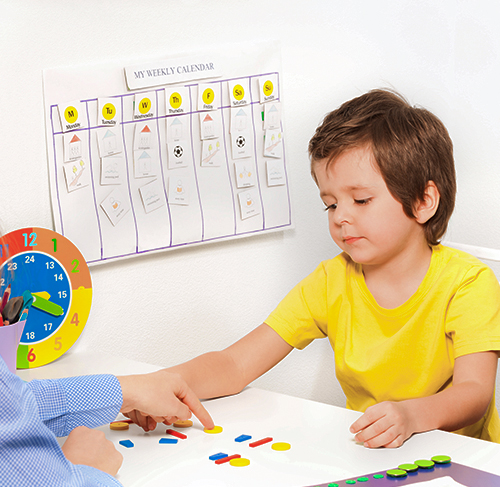If your child has recently been diagnosed with autism or is starting Applied Behavior Analysis (ABA) therapy, one of your first questions may be: Who are the ABA therapy providers working with my child?
Knowing who’s on your child’s care team—and what each person does—can feel overwhelming at first. From certified clinicians to trained technicians, each professional has a unique part in delivering effective, compassionate care.
In this article, we’ll break down the key roles within an ABA therapy provider team, including what qualifications they hold, how they work with your child, and what you can expect as a caregiver. Whether you’re a parent, educator, or healthcare provider, understanding these roles will help you feel more confident navigating your child’s ABA journey.
Let’s meet the professionals behind the progress—and explore how they work together to support your child’s growth.
Who Are ABA Therapy Providers?
ABA therapy providers are professionals trained in the science of behavior. Their job is to assess, plan, and deliver personalized treatment that helps individuals—especially children with autism—develop critical life skills. These providers work as a team to support progress at home, in school, and in the community.
While the specific makeup of a therapy team may vary, most ABA programs include a mix of clinical leaders and direct-service staff. Each provider plays a unique role in the success of your child’s treatment plan. Understanding who does what helps families stay informed, ask the right questions, and feel more empowered in the care process.
Here are the core members you’ll find on most ABA teams:
- Board Certified Behavior Analyst (BCBA) – The clinical leader who designs and oversees your child’s treatment plan.
- Board Certified Assistant Behavior Analyst (BCaBA) – A mid-level professional who supports the BCBA and supervises direct care when assigned.
- Registered Behavior Technician (RBT) – A trained technician who delivers one-on-one therapy based on the BCBA’s guidance.
Together, these ABA therapy providers form a collaborative team focused on one goal: helping your child grow, learn, and thrive.
Board Certified Behavior Analyst (BCBA or BCBA-D)
The Board Certified Behavior Analyst (BCBA) is the lead clinician on your child’s ABA therapy team. This professional holds a graduate or doctoral degree in behavior analysis or a related field and has completed rigorous training, fieldwork, and certification through the Behavior Analyst Certification Board (BACB).
BCBAs are responsible for designing, supervising, and adjusting your child’s treatment plan. They conduct in-depth behavioral assessments to understand your child’s strengths, challenges, and needs. These assessments might include interviews with caregivers, skill evaluations, rating scales, and direct observation. Based on the results, the BCBA creates an individualized behavior intervention plan tailored to your child.

But the BCBA’s role goes far beyond assessment. They:
- Train and supervise Registered Behavior Technicians (RBTs)
- Monitor treatment effectiveness and update goals
- Collect and analyze data on your child’s progress
- Provide regular parent and caregiver training
One of the most important responsibilities of a BCBA is caregiver collaboration. You can expect your BCBA to meet with you regularly, explain the treatment plan in plain language, and answer your questions. They’ll also guide you through hands-on strategies so you can reinforce your child’s learning at home. Caregiver training isn’t just a bonus—it’s a vital part of the ABA process that helps build consistency across all environments.
To become certified, a BCBA must:
- Earn a master’s or doctoral degree in a qualifying field
- Complete a verified course sequence in applied behavior analysis
- Accrue at least 2,000 hours of supervised fieldwork
- Pass a national board exam
- Adhere to a strict professional code of ethics
BCBAs are expected to maintain clear professional boundaries. They cannot accept gifts, engage in dual relationships, or provide services outside their scope. They are also required to stay up to date with best practices and ongoing education.
As a parent or caregiver, your BCBA is your main point of contact. They’ll guide your family through the entire ABA journey—from the initial assessment to ongoing check-ins, team meetings, and regular treatment reviews. Every 3 to 6 months, they’ll reassess your child’s progress and adjust the plan as needed.
Think of the BCBA as the captain of your child’s ABA therapy team—leading with expertise, compassion, and a clear roadmap for progress.
Board Certified Assistant Behavior Analyst (BCaBA)
The Board Certified Assistant Behavior Analyst (BCaBA) is a mid-level professional who works under the supervision of a BCBA. While not all ABA therapy providers include a BCaBA on staff, they play an important support role when part of the team.
BCaBAs hold a bachelor’s degree and complete a verified course sequence in behavior analysis. They also complete 1,300 hours of supervised fieldwork before taking a national certification exam. Like BCBAs and RBTs, BCaBAs follow a professional code of ethics and must maintain appropriate boundaries when working with families.
Although BCaBAs cannot independently design treatment plans, they can:
- Deliver direct behavior-analytic services to clients
- Supervise RBTs under a BCBA’s guidance
- Help analyze client data and monitor progress
- Recommend protocol adjustments (with BCBA approval)
In many cases, a BCaBA works closely with both the supervising BCBA and the RBTs to make sure your child’s treatment stays on track. They may provide additional supervision, help train staff, or assist with behavior data collection and interpretation.
Because of their dual role—both supporting clinical oversight and delivering services—BCaBAs are uniquely positioned to bridge the gap between therapy design and therapy implementation. This makes them a valuable resource for improving communication, quality of care, and consistency across your child’s ABA program.
While not every provider team includes a BCaBA, their involvement can strengthen the structure and supervision of your child’s care—especially in programs with multiple technicians or more complex goals.
Registered Behavior Technician (RBT)
The Registered Behavior Technician (RBT) is the team member your child will likely see the most. RBTs are trained paraprofessionals who work one-on-one with clients to carry out the behavior intervention plan designed by the BCBA. They are on the front lines of therapy—helping your child learn new skills, reduce challenging behaviors, and make meaningful progress every day.
RBTs do not create treatment plans or work independently. Instead, they receive close supervision from a BCBA or BCaBA and follow specific procedures based on each child’s goals. These goals may include communication, daily living skills, emotional regulation, or social interaction.
RBT responsibilities include:
- Implementing therapy sessions as outlined by the BCBA
- Collecting behavior data during sessions
- Using reinforcement strategies to encourage positive behaviors
- Prompting, modeling, and teaching new skills step by step
- Communicating progress to the clinical team
To become certified, an RBT must:
- Be at least 18 years old
- Have a high school diploma or equivalent
- Complete a background check
- Finish a 40-hour training program
- Pass a competency assessment with a qualified supervisor
- Pass a national exam administered by the Behavior Analyst Certification Board (BACB)
RBTs are also bound by a strict ethical code. They cannot accept gifts, engage in dual relationships with families, or perform duties outside the scope of ABA therapy. Their role is not to babysit or tutor—it is to apply evidence-based techniques with professionalism, consistency, and care.
When an RBT works with your child, they’re not just following instructions—they’re building a relationship based on trust, structure, and positive reinforcement. RBTs often become familiar, supportive faces for children receiving ABA services. Their work helps turn clinical goals into real-world progress, one session at a time.
What Questions Should You Ask?
Asking the right questions helps you stay informed and advocate effectively for your child. Consider the following:
- Who is supervising my child’s case, and how often will we meet?
- How is progress measured and reported?
- What strategies are being used to help my child learn new skills?
- How can I support my child’s goals at home?
- What should I do if I notice changes in my child’s behavior outside of sessions?
- What are the qualifications of each team member?
- How is supervision handled, and how often are team members observed?
How Can You Ensure Continuity and Transparency in Care?
Consistency is key in ABA therapy. To support continuity and transparency, look for a provider that offers:
- Clear treatment plans: Your child’s goals and therapy strategies should be written out, easy to understand, and shared with you at the start of services.
- Regular updates: You should receive ongoing updates about your child’s progress, not just during reassessments.
- Parent training: BCBAs should provide training that helps you reinforce your child’s skills at home.
- Open communication: You should feel comfortable asking questions, expressing concerns, and requesting changes when needed.
- Ethical professionalism: The team should follow professional boundaries, avoid dual relationships, and focus on your child’s best interests.
A Collaborative Team Behind Every Step
ABA therapy is most effective when delivered by a coordinated, qualified team—and when parents are informed, supported, and involved. From the clinical expertise of a BCBA to the hands-on care provided by RBTs, each ABA therapy provider plays an essential role in helping your child grow, learn, and thrive.
By understanding who’s on your child’s team, how they work together, and what to expect along the way, you’re better equipped to advocate for your child and partner with providers every step of the way. And when everyone is aligned—providers, families, and support staff—ABA can truly become a life-changing experience.
Have questions or want to learn more about our ABA therapy services? Contact us today to speak with a specialist.
Want to make a difference in the lives of children with autism? Explore open roles and apply today on our Careers Page.
Follow us on Facebook, Instagram, LinkedIn, and Twitter to stay on top of our latest updates.










Leave A Comment